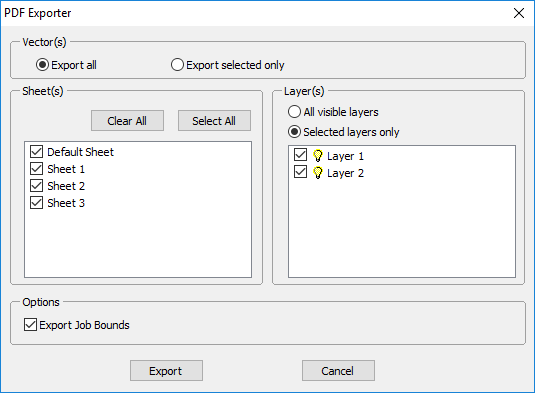

Any recent computer or hardware (less than five years old) will show a serious step-up in 3D performance when running v11.5. New or imported models and clipart can all now be transformed or edited live using new, fully interactive, tools directly in the 3D view. Improved lighting and shading techniques in the 3D view provide consistent visual shape and depth cues whether working on single-sided, double-sided or rotary projects. The 3D material block can be viewed and manipulated dynamically while toolpath cutting is simulated, even in higher resolutions. Toolpath previews draw faster and with more clarity. The result is the smoothest, highest detail, 3D View ever. To make full use of this resource whenever it is available we have completely rebuilt the 3D rendering infrastructure across all the products in our v11.5 range. The power of graphics hardware has increased dramatically in recent years. The final option also allows you to drop the component by the value we are removing to, to help keep your models to standard relief heights.


Simply select if you would like to replace this with transparency or a plane. This height can be manually typed in or you can simply double click on an area of the model itself that we want to remove and the form will update according to the Z value of where you have clicked. Another scenario could be that you have created a negative area in your model for example when sculpting or combining a component with a deep subtracted model, this tool will easily remove anything below a given height. For example if you've imported an STL model that has a lot of thickness, which can be quite typical of 3D scanned data, this tool will allow us to simply trim away the unwanted thickness. This tool allows you to trim or flatten the bottom of a component(s). Then select the 3rd icon (upper left) This will add a vector boundary around the selected stl modelĥ) Now after performing the Note above this gives you the capability to select either the Model boundary or the Selected Vector you just created in the above Note.We have added a new model editing tool which replaces the “replace below” gadget. Note: a vector boundary can be added by doing the following:Īfter you have performed step 1 above select the Modeling tab (lower left) Of course the below is related to the Roughing & Finishing Toolpaths in V-Carve Pro (which is what I have)ġ) Have you tried by first selecting the model and getting boxes you say that you are getting.Ģ) Then Select either the Roughing Tool path or the Finishing Tool path (whichever you prefer to use)ģ)Then Select your tool to be used for the tool pathĤ)Then go to Machining Limit Boundary and select MODEL boundary (which will carve to the model's edges) - Of course there are other selections here but beings there are no vectors with the model you have imported you will get an ERROR message.


 0 kommentar(er)
0 kommentar(er)
